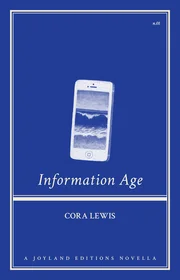
The unnamed, single narrator works in journalism in New York City, covering topics large and small, local and national, in an editor-enforced“Plain-Jane…styleless” style, which makes her feel a hack. She has two roommates: Leon, a friend since childhood, and Susannah, a poet and e-commerce support staffer; another longtime pal, Ruth, shares the up and downs of her marriage and caring for her baby. Lonely and adrift, she doesn’t feel comfortable with her father (who’s remarried), her well-meaning but casually cruel mother, or her crowded rental apartment. She attends parties filled with people she doesn’t know, has brief interactions with passing strangers, and tries to find love. Although other characters haphazardly bounce into and out of the narrative, her love interests receive the most attention—particularly Simon, a musician and paralegal with endearing and frustrating traits. The narrative is composed mostly of brief sketches of sensation, emotion, and action with no clear narrative thread, which gives the work an ethereal feel. Lewis skillfully wields sparse language to highlight the daily mundanities of navigating friendships, romantic relationships, and work, and also addresses the complexities of abortion. Occasionally, the sparsity gives way to beautiful imagery: “The river outside the window was motion and light, liquid hues like still-wet paint.” Small sensory details also breathe life into scenes: “Back at the house, my father’s trees bend in the curve of the wine glasses as I set the table.” Scenes of sex and flirtation appear often, as though the narrator wants to be reassured of her desirability; she also regularly highlights the technological changes rushing through society, as when a child thinks that “Don’t forget to subscribe!” means goodbye.


